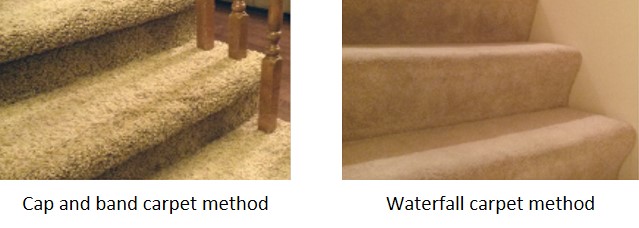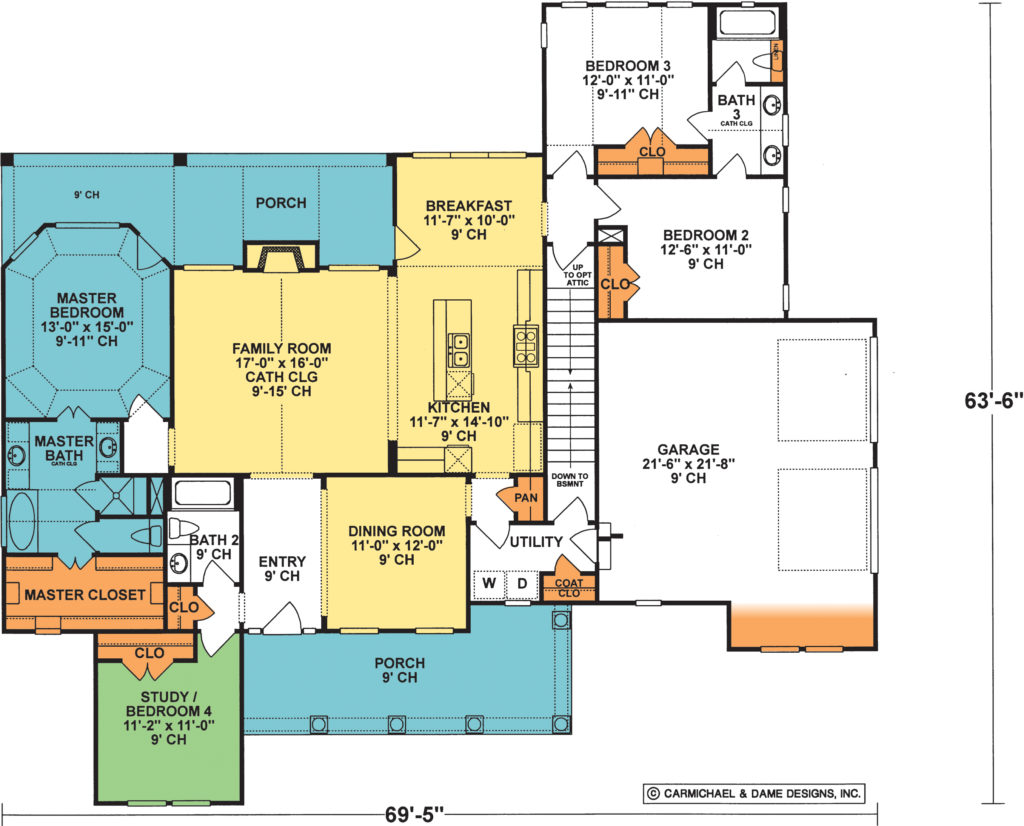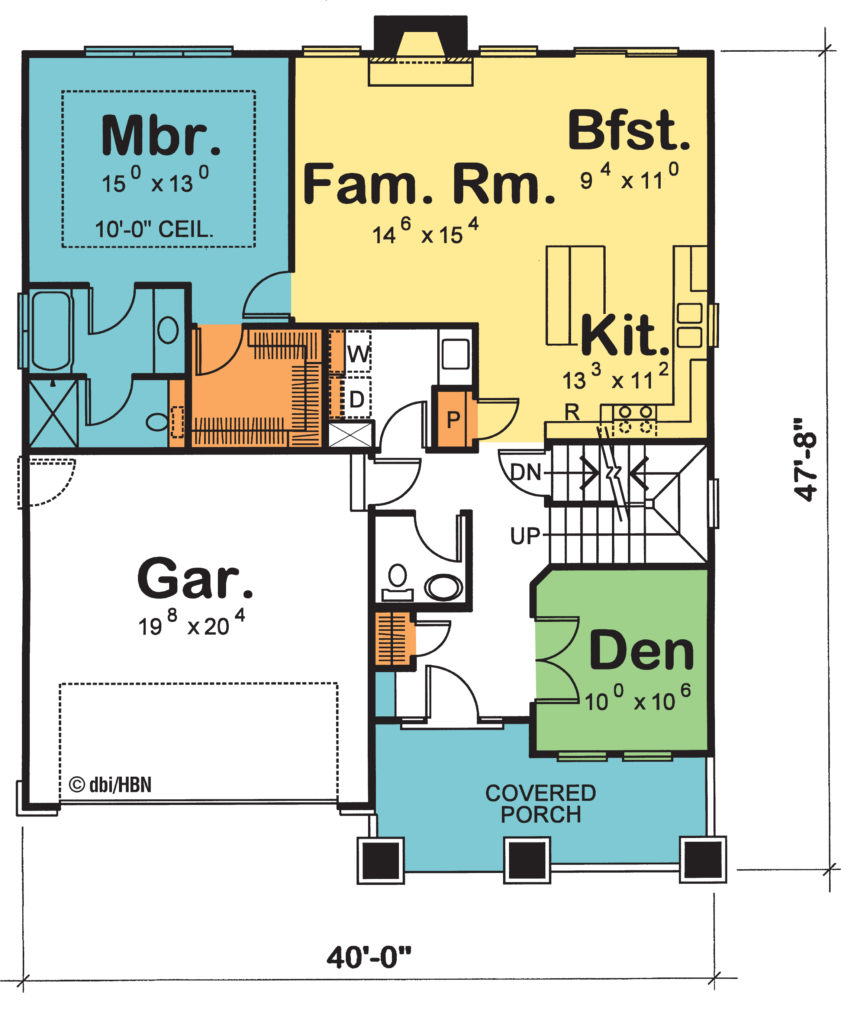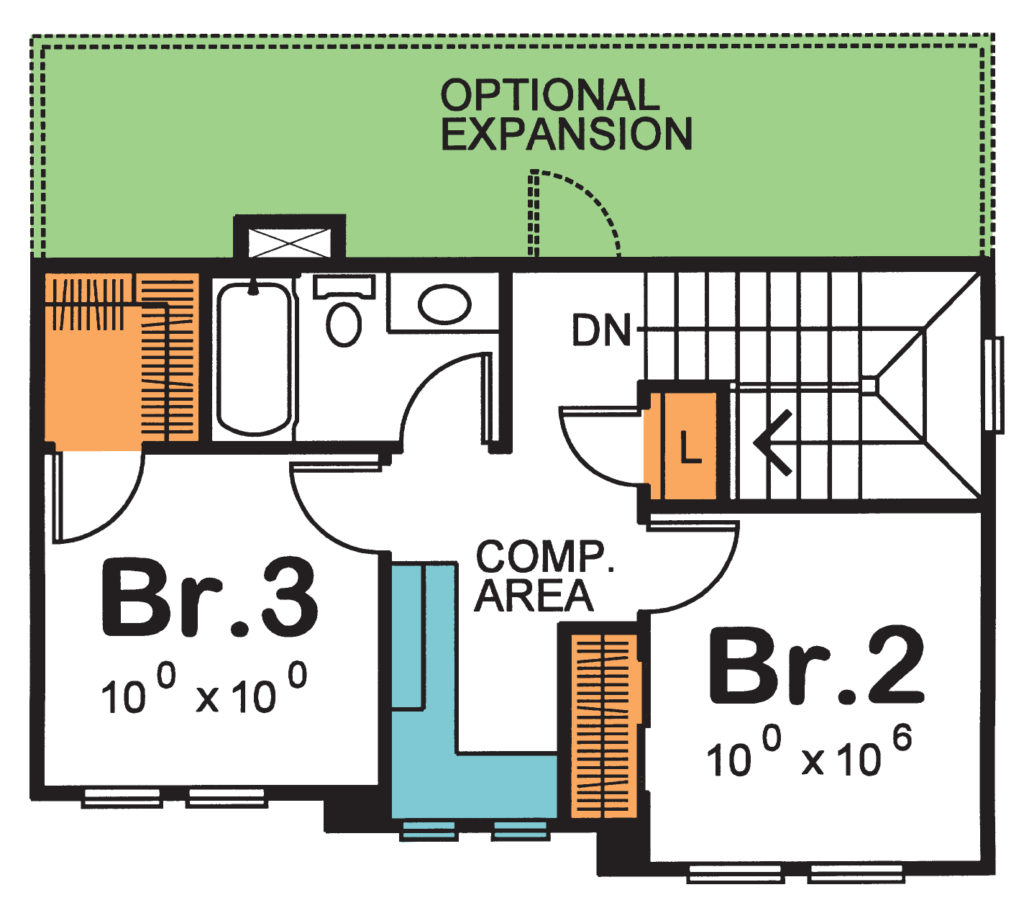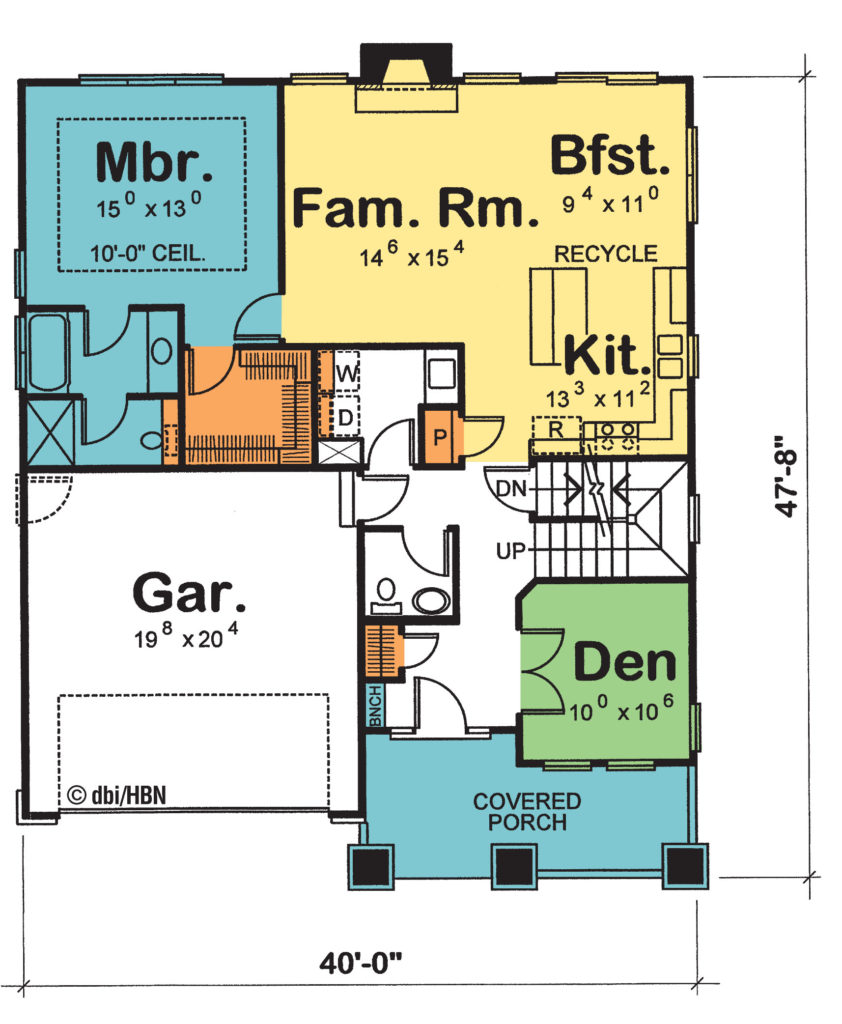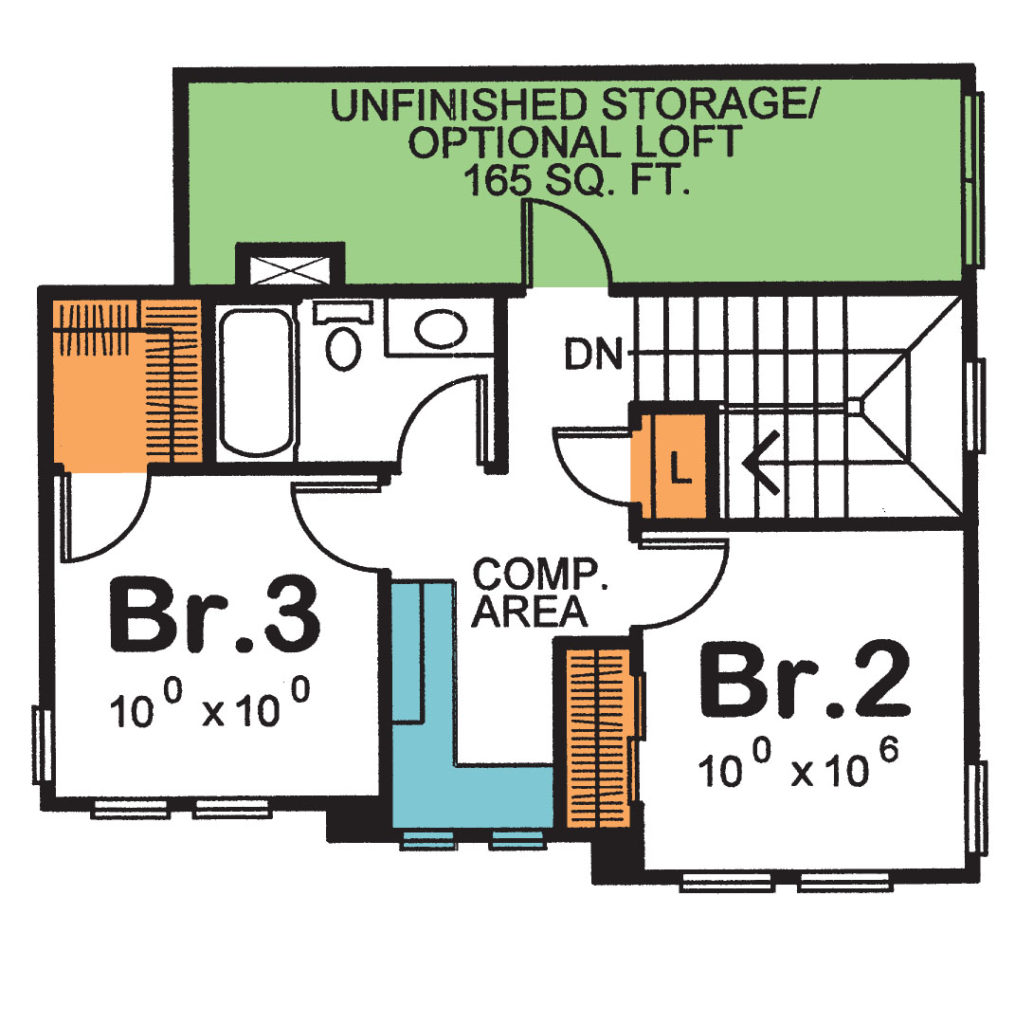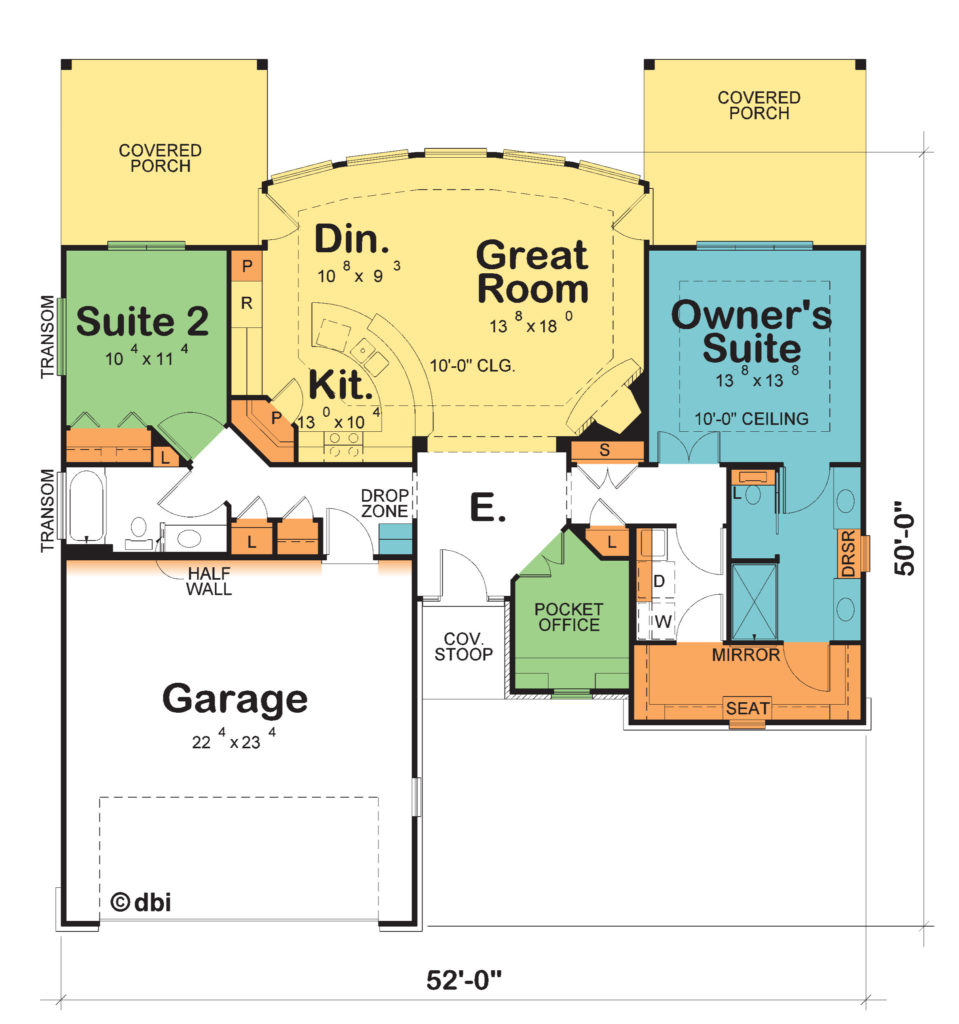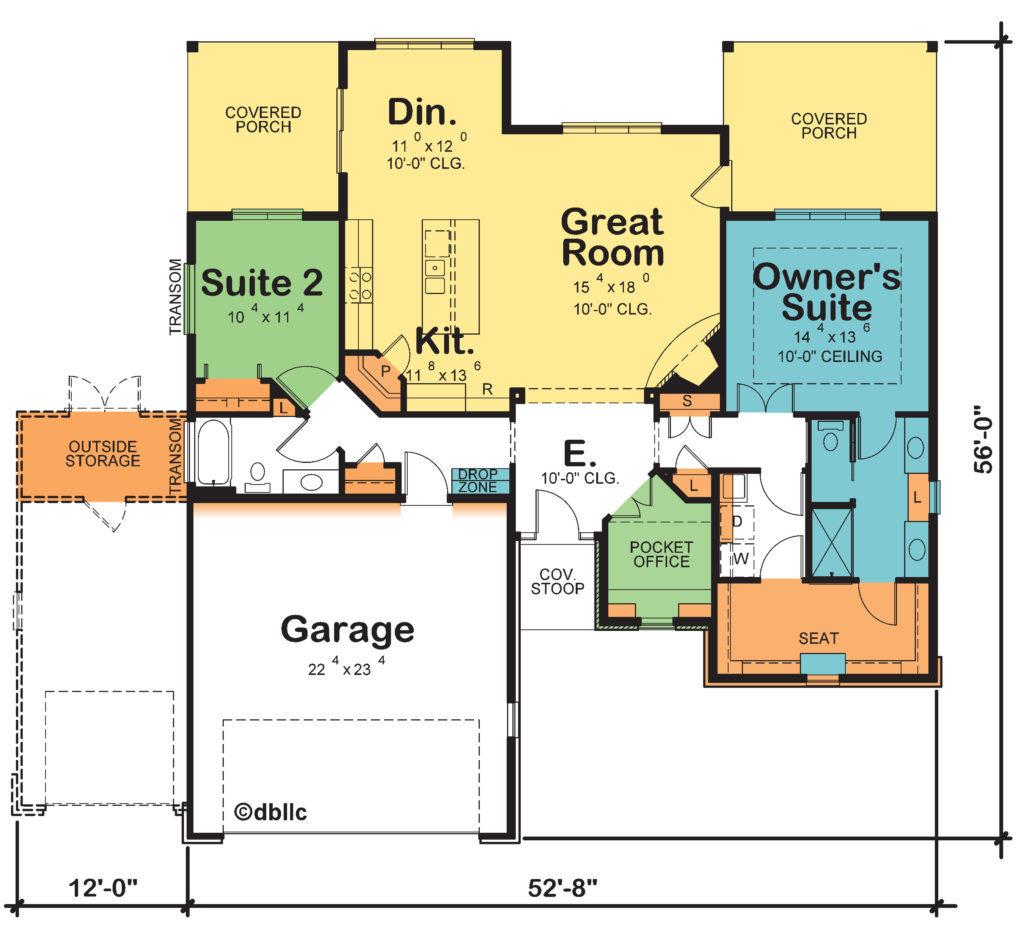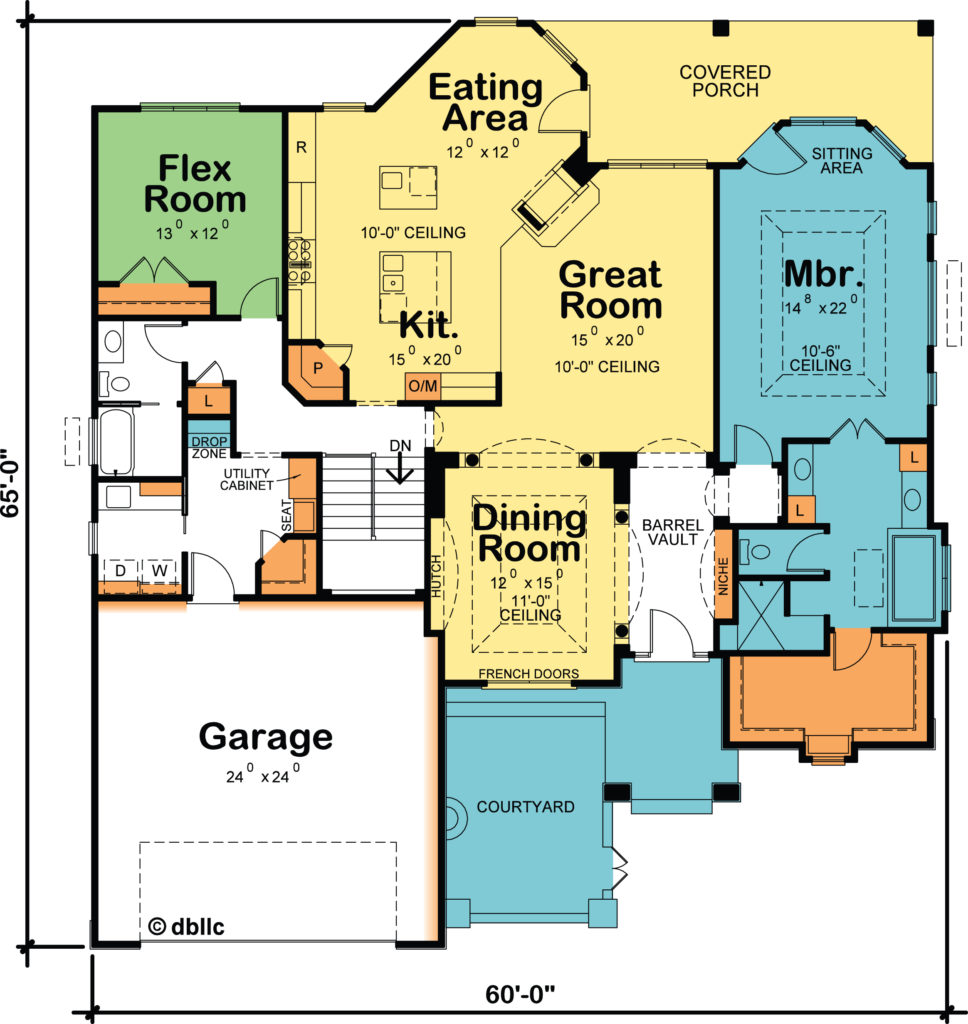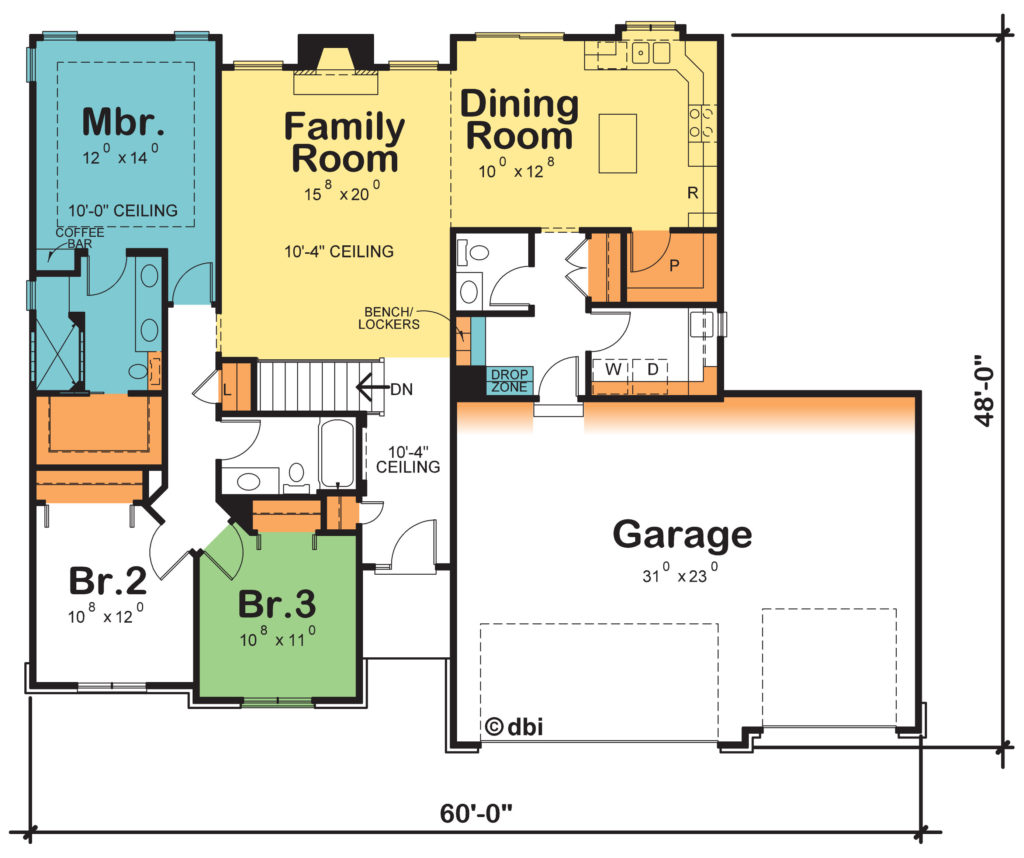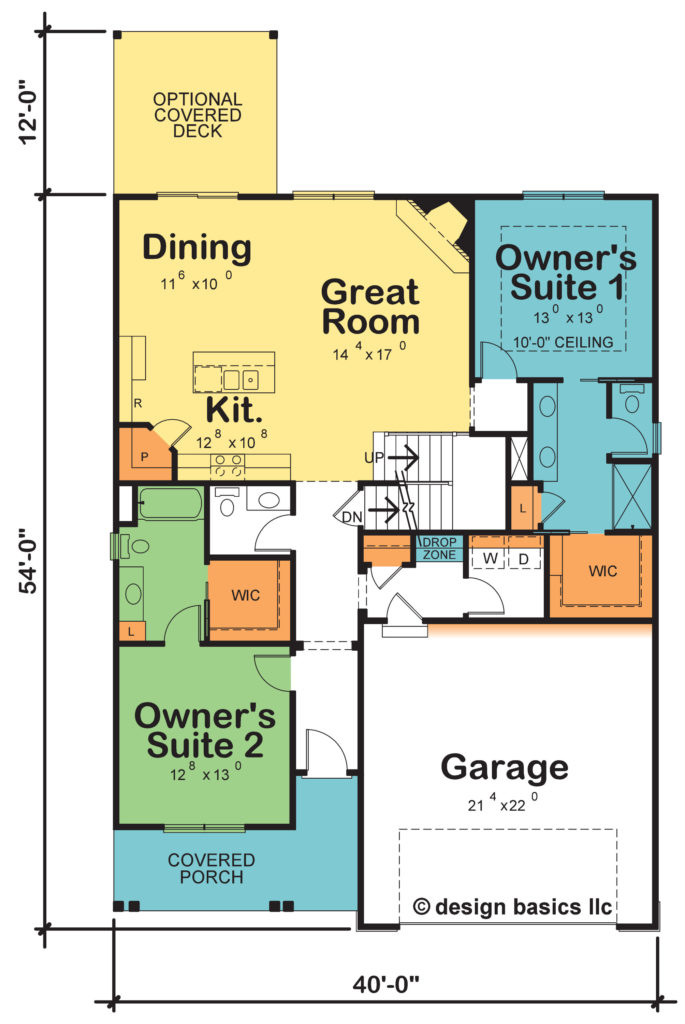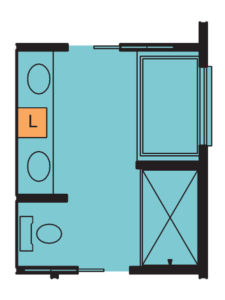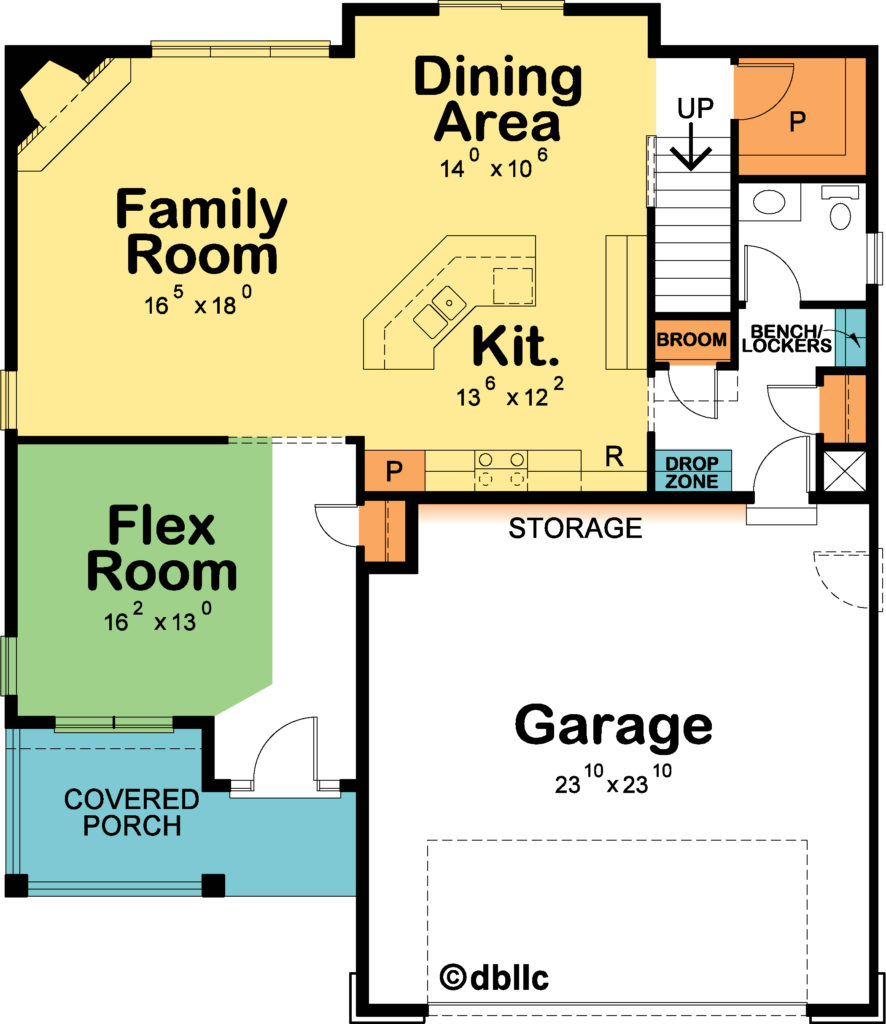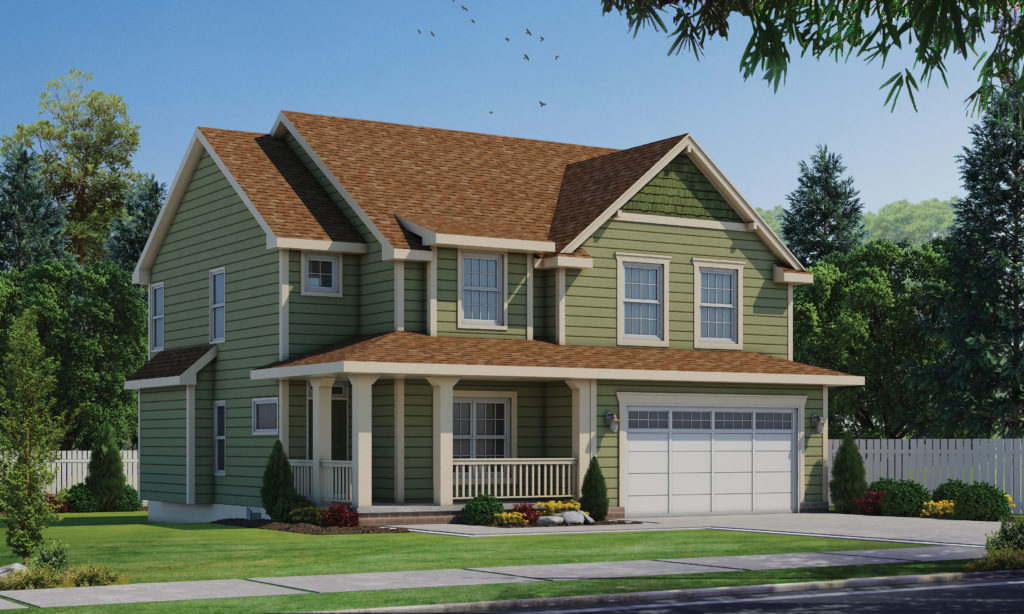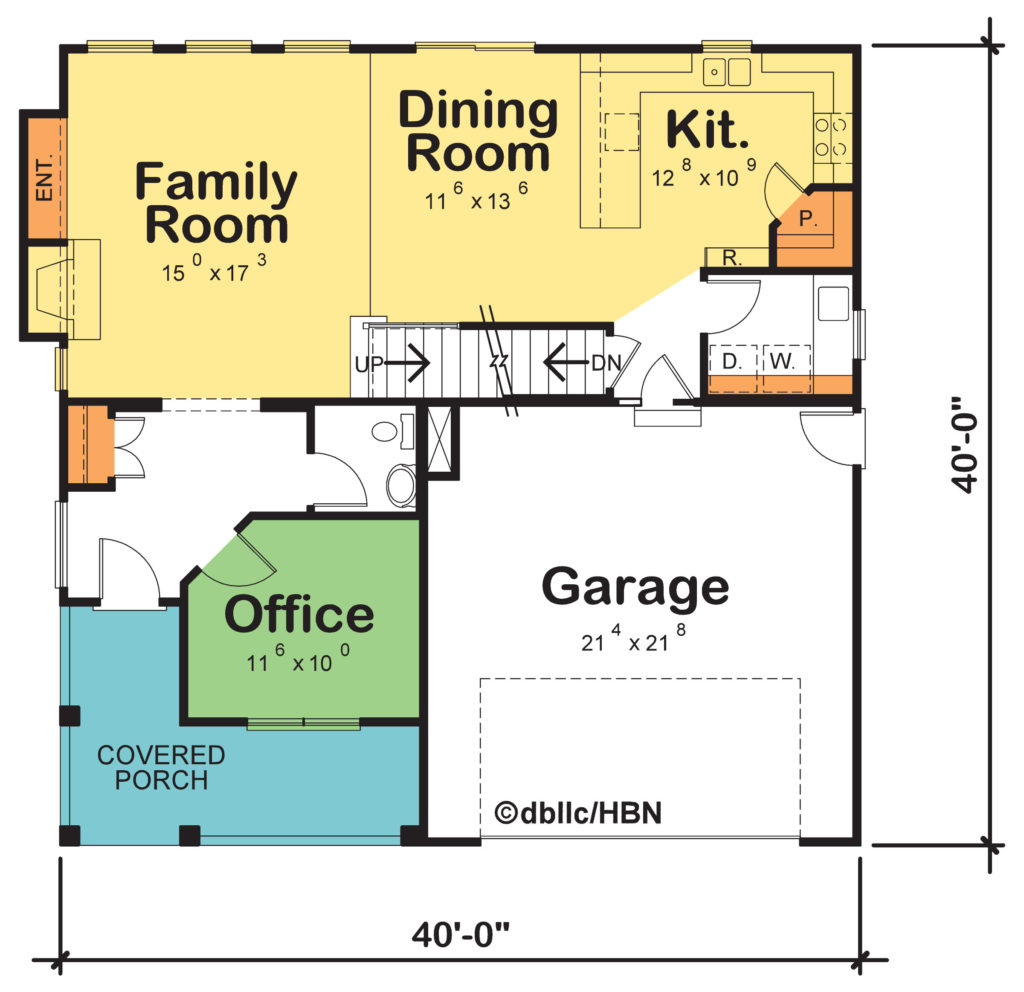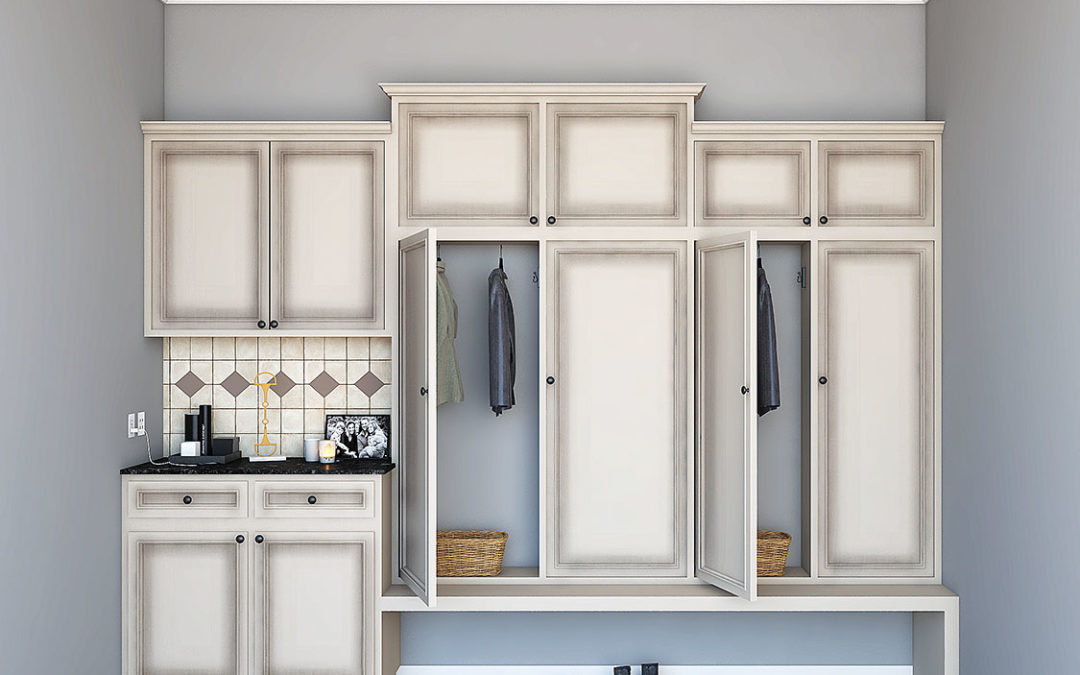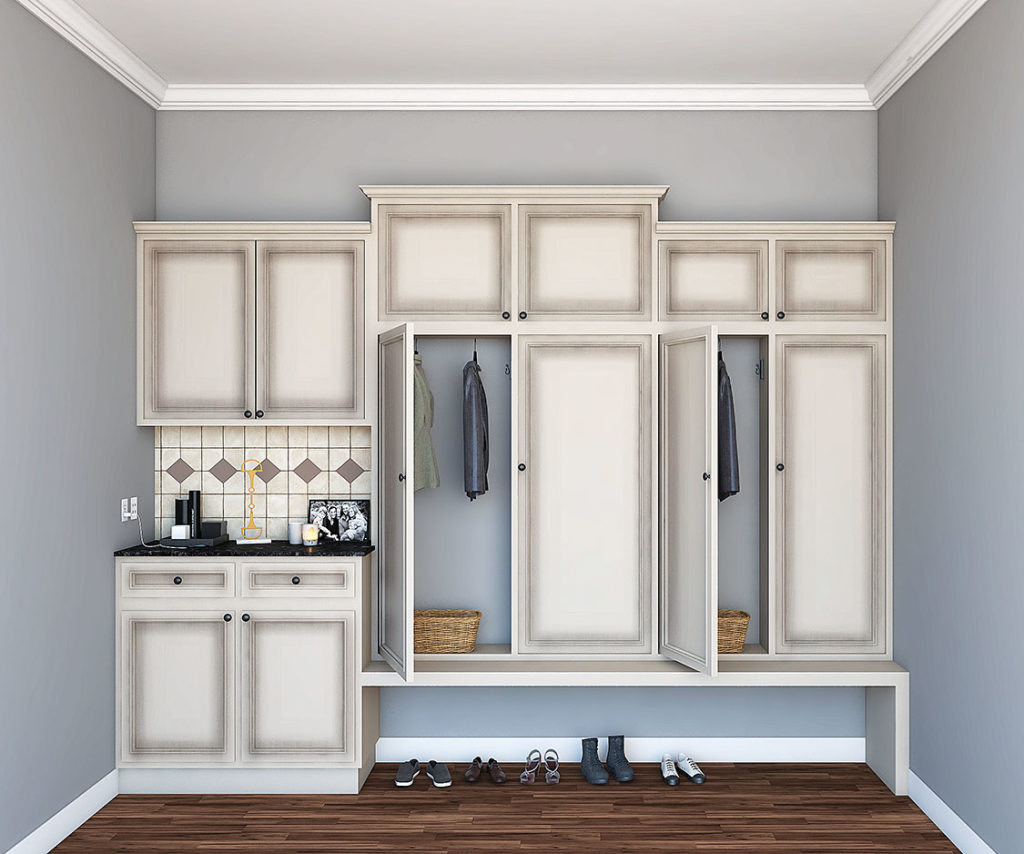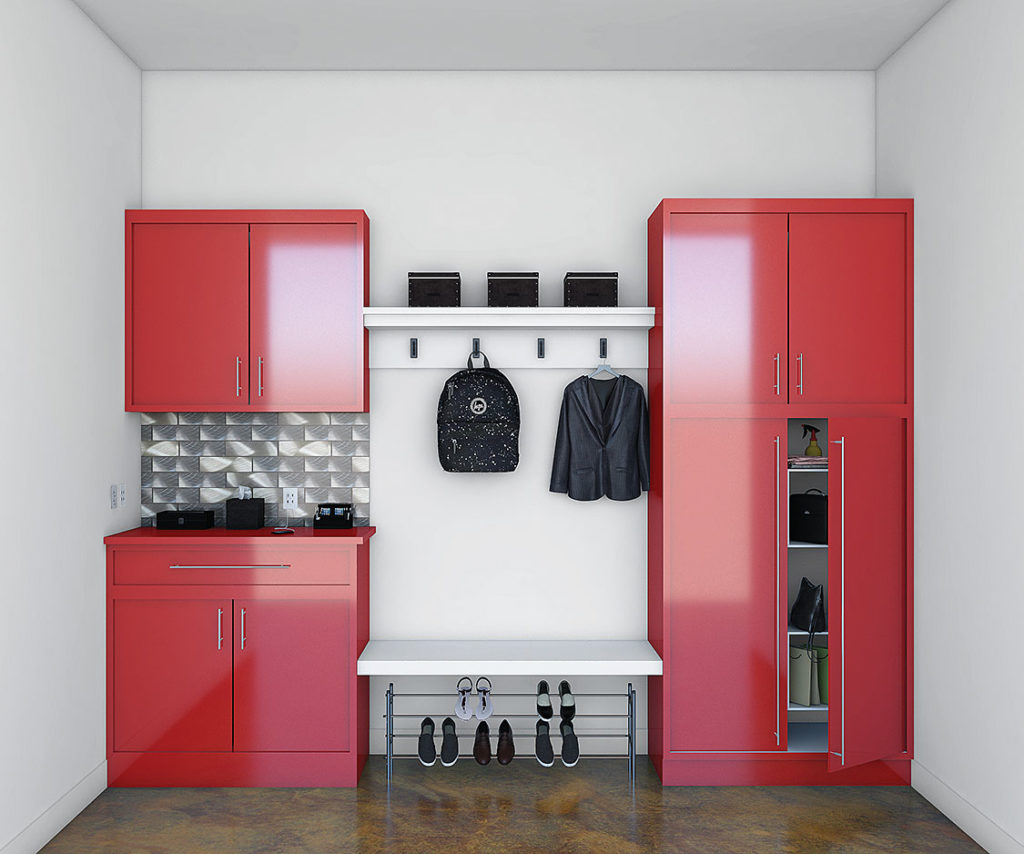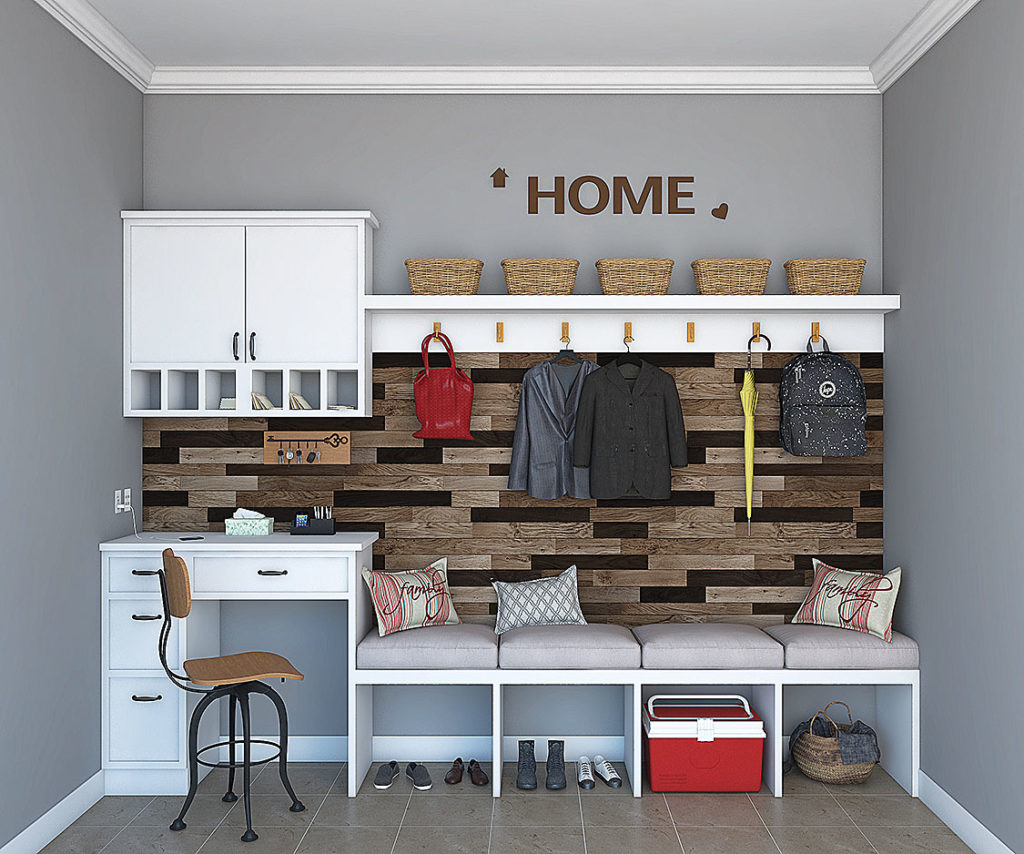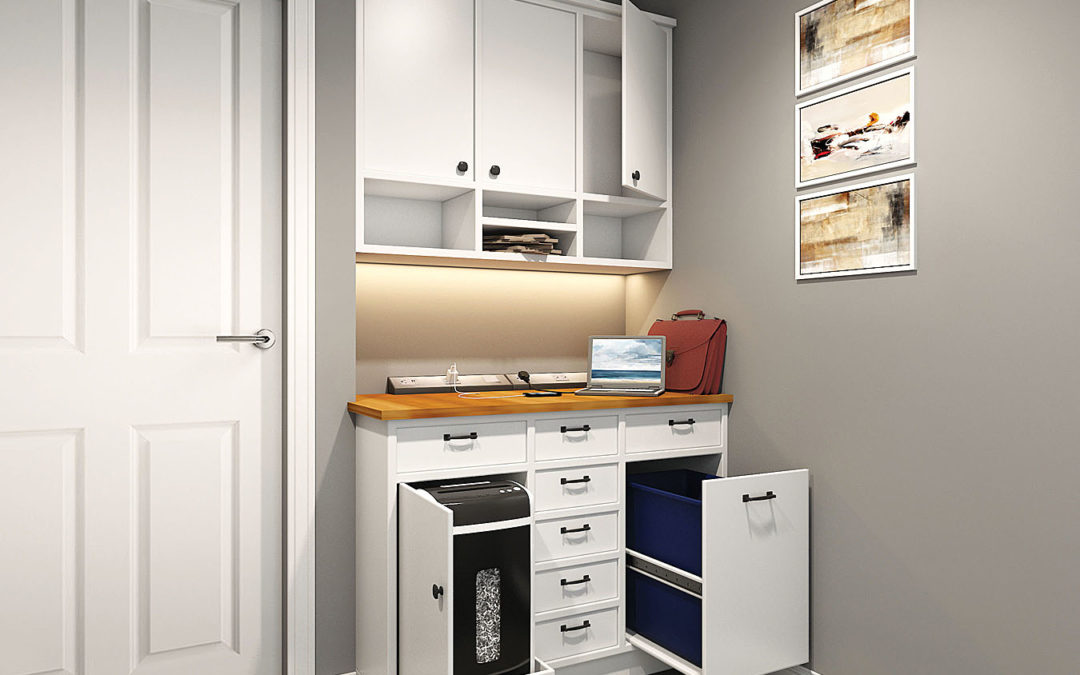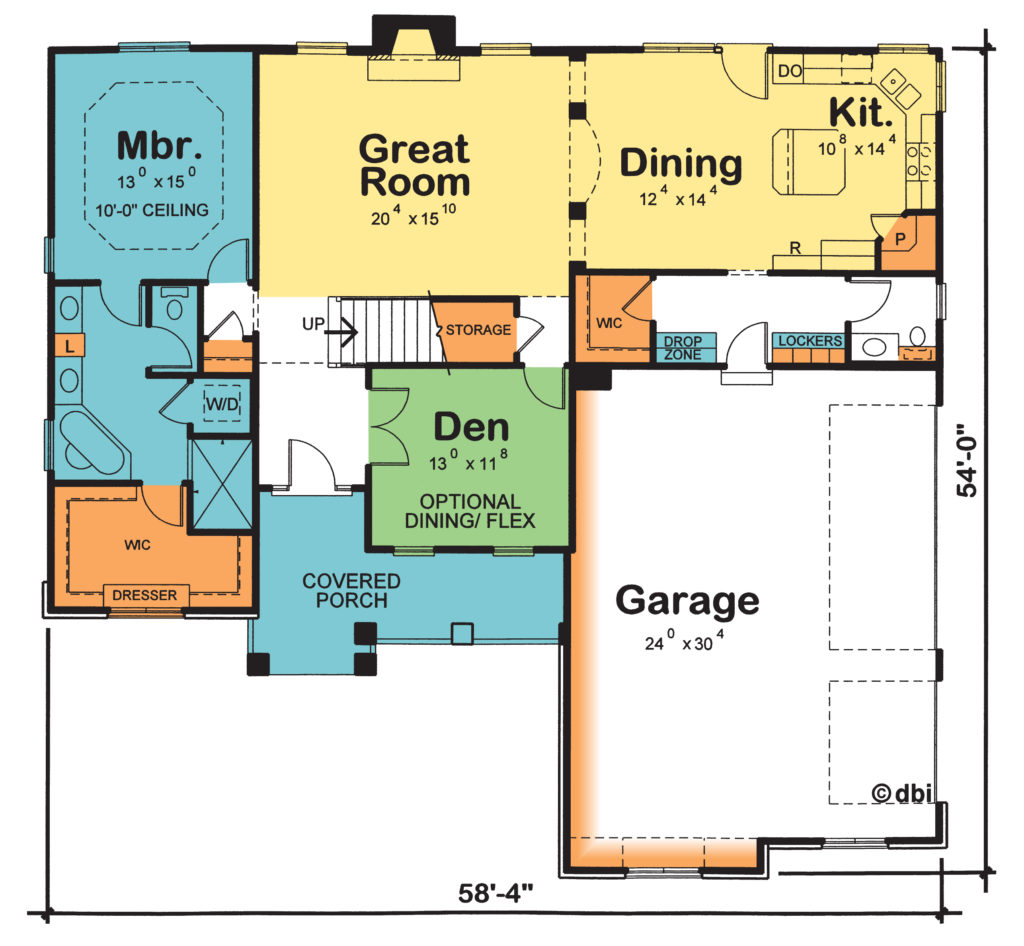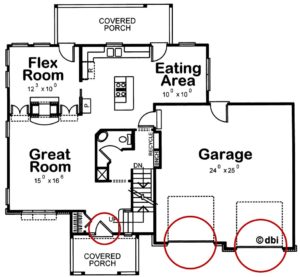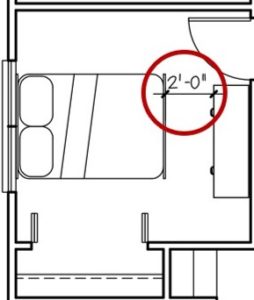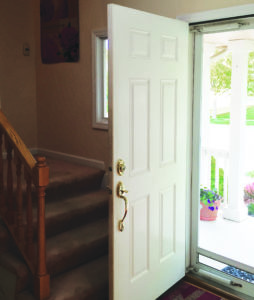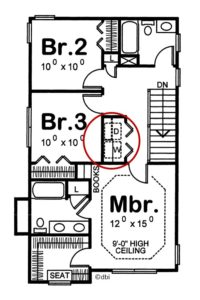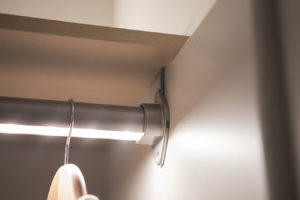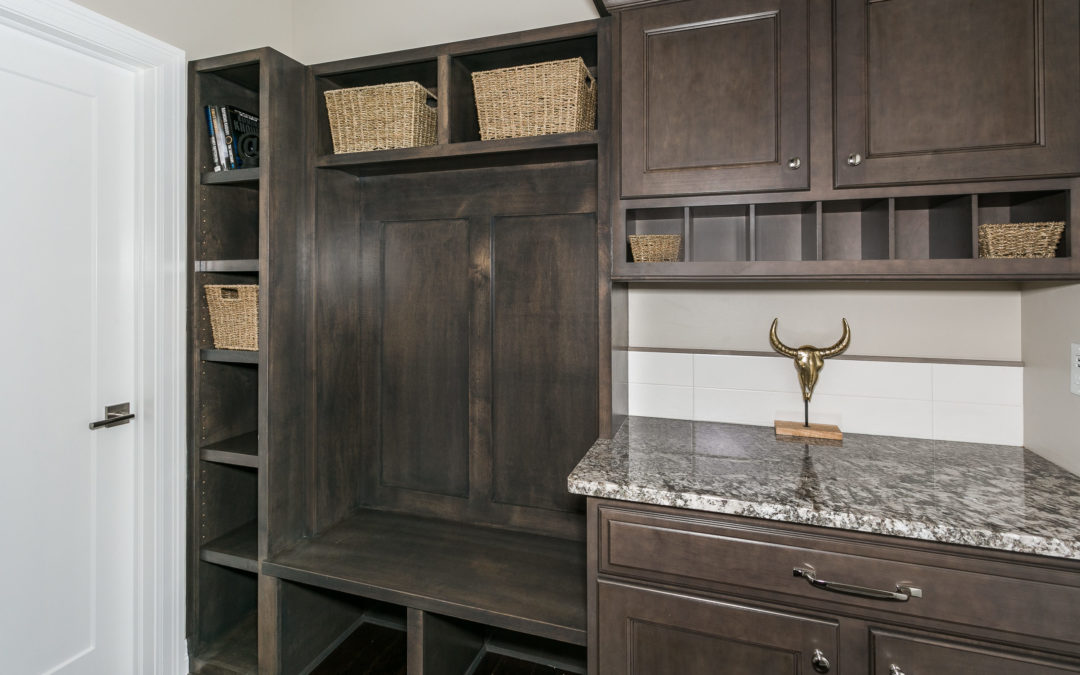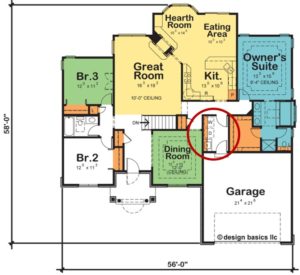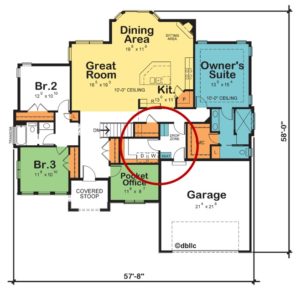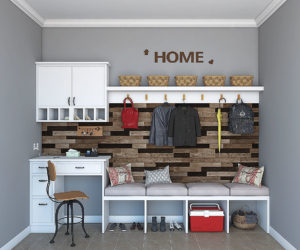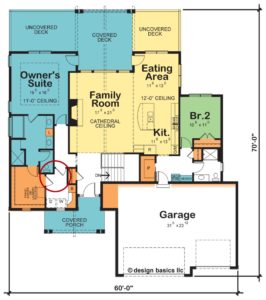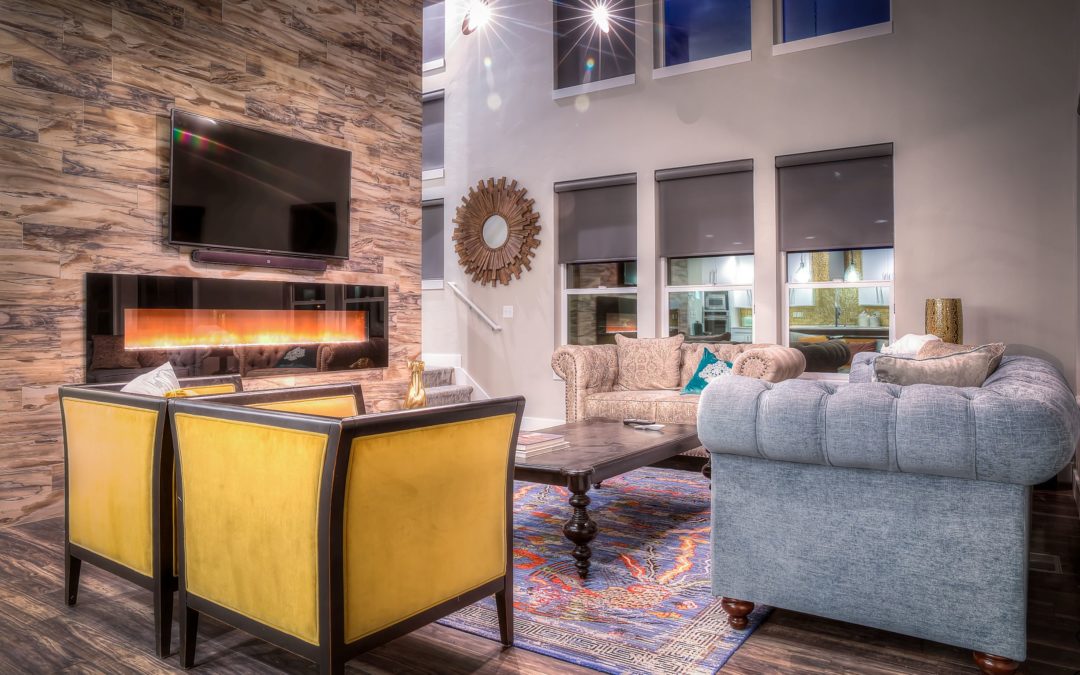
Beauty is Within
Aesthetics and Livability
Let’s look at a few of the sometimes overlooked or underappreciated floor plan design factors that drive cost.
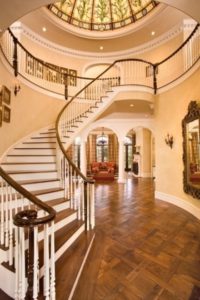 Staircase design, construction, and materials run the gamut of pricing. One guideline often used relates to the staircase’s public visibility – the more prominent the staircase placement, the more attention it usually gets. In some homes, the staircase is a signature design element; in others it is primarily functional. Simple and straight is the least costly staircase design, but that layout doesn’t work for some home designs. U-shaped staircases and L-shaped staircases with a 90-degree turn are also common but require a landing, which adds some cost. Flared and curving staircases can be stunning but are expensive.
Staircase design, construction, and materials run the gamut of pricing. One guideline often used relates to the staircase’s public visibility – the more prominent the staircase placement, the more attention it usually gets. In some homes, the staircase is a signature design element; in others it is primarily functional. Simple and straight is the least costly staircase design, but that layout doesn’t work for some home designs. U-shaped staircases and L-shaped staircases with a 90-degree turn are also common but require a landing, which adds some cost. Flared and curving staircases can be stunning but are expensive.
This elegant staircase (at right) is from the Grand Manor (plan #9286).
Staircase finish materials can have a large impact on the staircase cost. Having a wall on either side of the staircase is less expensive than a railing with balusters, cables, or glass panels. Carpeted stairs are usually less expensive than finished woods, Corian, stone, or glass. Regarding steps leading down to a basement foundation, if there is a door at the top of those stairs, they need not be carpeted.
Ceilings. Most new homes today feature 9-foot tall ceilings on the main floor, though some rooms may have even higher ceiling for dramatic effect. Those 9-foot ceilings make rooms appear and feel larger, but the longer framing lumber and larger sheets of drywall mean homes with 9-foot or taller ceilings will cost more than if they were built with 8-foot tall ceilings. Detailed ceilings (e.g., boxed, trayed) look great, but add expense as well. And even though cathedral ceilings may follow the home’s actual rooflines, they are considerably more expensive than standard, flat ceilings.
Ceilings are truly special in the Westcott Manor (plan #9171). There’s the Family room’s cathedral ceiling as well as cathedral ceilings over the tub in the suite bath and over the sink area in the compartmented bathroom shared by Bedrooms 2 and 3. Bedroom 3 also has a ceiling that slopes to 11-feet high in the center, as does the suite’s tray ceiling.
Natural Light. The physical and mental virtues of our exposure to natural light are well-documented, but there’s a cost to having larger or more windows in our homes. You may notice that some Design Basics’ home designs have the suffix “BL” (Better Living) following the plan number. Looking carefully, you’ll see additional windows on those home plans. Take the Cavanaugh plan for example. The BL version of that plan shows added windows in several rooms. Importantly, those windows are on other exterior walls, providing natural light from another direction, which is especially appreciated if the only windows in that room faced north. Additionally, having windows on two separate walls allows for natural cross ventilation of those spaces, improving the flow of fresh air in your home and those breezes make it feel cooler on warm days, so you may not feel the need for turning on the air conditioner.
At left, the Cavanaugh (plan #8540), and the Cavanaugh BL version (plan #8540BL) at right. Notice on the BL version the added windows on the right side (eating area and den), plus an additional window in the Suite bedroom.
Upstairs, both bedrooms gain windows on the outside walls in the BL version of the plan. There’s even a window to brighten the optional expansion area in the BL design!
First impressions matter.
The Durango (plan #50020 below left) impresses, with its dramatic, curving, window-lined back wall and radius peninsula kitchen. It also costs as much to build as the larger Durango Point (plan #50043 below right) that provides a more spacious eating area.
Arches and columns can add distinction – and cost. As seen in the Murnane Manor (plan #42156), arched openings line the home’s front entry, with arches on either side of the formal dining room resting atop columns. Echoing that theme, arched recesses for a hutch space and display niche add further “Wow!” It’s a matter of your investment priorities, the look you’re after, your budget, and how you want your home to live.
Rear Entry Foyer. For homes with attached garages, we go in and out of our homes through the garage over 90% of the time, and that rear foyer entry has become a design focal point. Facilitating how people actually live in their homes, top rear foyer designs will provide a place for coats, a bench for tying or removing shoes, and a drop zone for organization and minimizing clutter. These must-have amenities do add to your home’s price, however, compared to dated home plans where a laundry/mudroom is your entry from the garage. Laundry rooms are a top priority among new home buyers, they just need to be elsewhere. Those laundry rooms are also an expense consideration, especially because laundry room amenities may add to your home’s price twice – the cost of the amenities themselves, plus they often require a larger space, increasing the home’s square footage.
The Locklear (plan #42074) presents an accommodating rear foyer with drop zone, bench topped by lockers or cubbies, and coat closet. The laundry room is separate and provides storage, hanging, folding counter, sink, and window, all of which add to the home’s price.
Bathrooms can have a significant impact on your new home investment. The Cedar Ridge’s (plan #42434) Suite 1 bathroom is accessed via a pocket door, which costs more than a hinged door, but eliminates the door swing conflict potential for someone standing before the first sink. It also has the expense of an extra wall and door to enclose the toilet area, which many buyers value. Three-foot by five-foot showers are pretty much the minimum size today in suite bathrooms. Fortunately, that’s a standard size for shower pans, eliminating the expense of needing a “job-built” shower. An alternate layout loses the private toilet area and some linen storage in favor of adding a soaking tub (and some expense).
Fireplaces. As shown in the Moss Bluff II (plan #43066 below left), fireplaces positioned inside the home avoid the expense of having to trim around the bump out of a fireplace on the outside (example Portsmouth – plan #8638 – images below right). In addition, the dining area cantilevers (extends beyond) the foundation, avoiding an expensive foundation jog. And the large walk-in pantry provides the kitchen storage you want cheaper than adding expensive cabinetry.
Next time we dive deeper than the obvious when we address how the type and size of home influence its price.
For more resources on thoughtful design and products:
- View other articles on our blog
- Browse our Her Home™ Magazine
- Thoughtful Design Concepts
Cover photo: Perrypointe (plan #56399)
